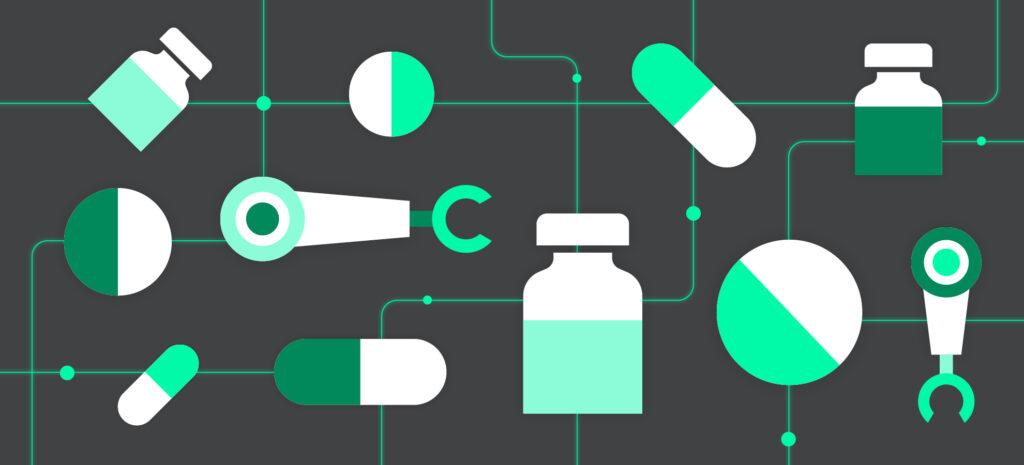Bringing a new product to launch is a process years in the making. It’s costly, fraught with potential risks, and involves hundreds of decisions – upon which rest a patient’s survival or quality of life. Life science companies obsessively focus on precision and due diligence in getting products to market. Still, even the most careful processes and iron-clad procedures can lead to problems at launch. So how can drug and device companies leverage technology for launch excellence to increase their chances for success?
What are the main obstacles to launch excellence?
Launching a new drug is never straightforward, and making it to launch is no guarantee of success. From 2009 to 2017, 40% of drug launches failed to meet their two-year sales goals; overall, 65% of first-time launches fell short of pre-launch sales expectations. Traditionally, launch issues can arise around regulatory issues or over-ambitious sales goals, but today’s life science teams face some particular challenges:
- Estimating market potential. Pharmaceutical and medical device companies that don’t have an adequate understanding of their market will certainly suffer at launch. This critical understanding begins with getting a holistic picture of the disease community, including the patients who experience the disease or condition and the physicians and other experts who treat and study it.
- Lingering effects of COVID-19 on sales and marketing. While most of the world has established an uneasy acceptance of COVID-19, the impact persists across everything from manufacturing and supply chains to how sales representatives interact with prescribers. These relationships were typically built through one-on-one, in-person meetings over months or even years. Now, life science companies and prescribers have developed new ways of working and communicating that have disrupted the traditional approach.
- Increased competition. Life science companies used to enjoy a more significant sales window free from competition. In the past, this window was about eight years on average, but today, that average has been cut in half. If your own company can innovate more quickly, you can count on the fact that the competition is doing the same.
- Market access. Limited market access is a common issue across products that come up short following launch. This can be due to formulary issues, unfavorable placement, or a lack of health economics input around pricing. When access is limited, both prescribers and patients can find products less appealing, fearing they aren’t effective or won’t be accessible in the future.
How can technology increase the chance of a successful launch?
As drug and device companies feel pressure from these challenges, they will prioritize solutions that will streamline work without disrupting it. Life science companies are increasingly turning to insights management technology to optimize operations across the entire product lifecycle – including before and at launch:
- Better understanding of specific disease communities. Through network analytics and social listening technologies, teams involved with launch can be more strategic with an understanding of current treatments, competitor activity, patient conversations, and other foundational insight.
- More effective conversations and collaboration. Medical science liaisons (MSLs) are by now accustomed to meeting with prescribers virtually – but if these conversations aren’t collected and analyzed properly, the benefits to decision-making and relationship-building will be negligible. Virtual engagement technology designed for pharmaceutical and medical device teams brings conversations into a venue that can draw out more thoughtful input. As conversations accumulate, artificial intelligence (AI) and natural language processing (NLP) applications can quickly identify trends and steer subsequent conversations. These virtual venues can also be used for MSL training.
- Increased differentiation. The days of using trial data as a standalone differentiator are over – prescribers and influencers need more. Using virtual engagement technology to gain feedback from trial participants, patients, physicians, investigators, and other stakeholders can make it easier to create content that conveys the clinical and non-clinical benefits of new products. Patients and prescribers can participate in virtual document reviews that produce more personalized and meaningful support materials, educational information, and messaging.
- Improved market access strategy. Market access issues can sink a new product, but this risk can be reduced with adequate payer and health economics input before launch. Getting payer insights for reimbursement can take place virtually, and AI and NLP applications can help surface areas of concern as conversations take place.
What’s the impact of insights management technology on launch excellence?
At its core, insights management technology helps life science teams move more quickly from insights, or the data and field observations collected from multiple channels, to action – usually a key strategic decision. When bringing a product to market, teams will make hundreds of decisions. The potential impact is significant with technology applied across all of these inflection points. Drug and device companies could market drugs more accurately, produce more personalized and targeted content for patients and prescribers, establish more realistic sales targets, and overall increase their chances of a successful post-launch period.







